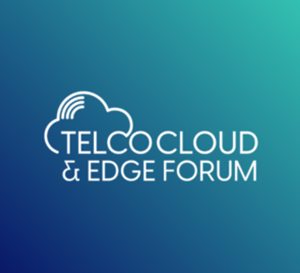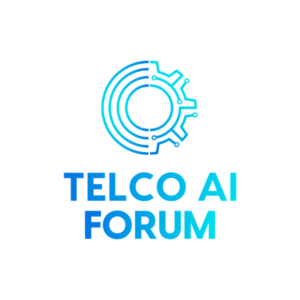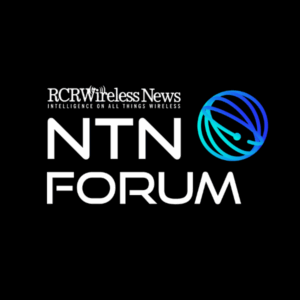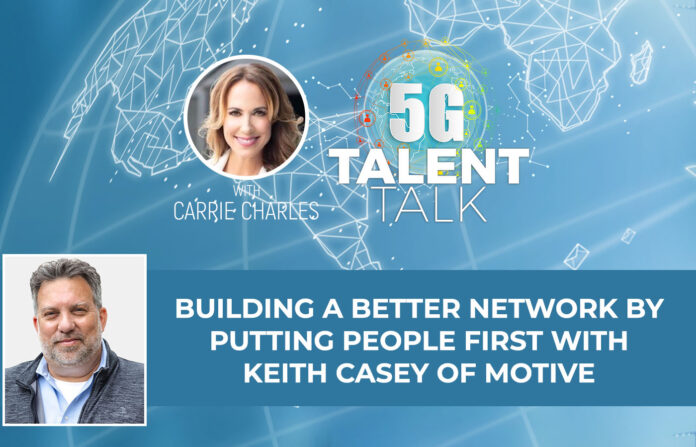To thrive in telecommunications, you must be a problem solver. Join your host Carrie Charles as she interviews Keith Casey, President of Motive Infrastructure Solutions, an organization known for setting the benchmark in excellence and continuous improvement. In this episode, listen along as the two discuss how previous military experience applies now to their roles as leaders in the telecommunications industry, the best practices for talent acquisition and retention, the importance of communication, and proven effective leadership strategies.
—
Watch the episode here
Listen to the podcast here
Building a Better Network by Putting People First with Keith Casey of Motive
I am so excited to have Keith Casey on the show. He is the President of Motive Infrastructure Solutions. I’ve been waiting for a long time to have you on the show, Keith. I can’t wait to get this conversation started so welcome.
Thank you so much for having me.
Let’s get started. Keith, I want to hear about your path to where you are now.
I thought a lot about this. Everybody asks you where you came from and what you do. I always go back to my military career, but it starts with my parents. Growing up, I was the oldest of four siblings and my parents wired us pretty tight. I grew up in Oregon, two and a half acres. The house was about an acre on there, but the other acre and a half was a garden and an orchard that I got well known to as a child. There were a lot of blood, sweat, and tears in there. I go back to my upbringing and how I was wired as a child.
I took that into my own entrepreneurship. Both my parents were executives, very successful, and taught us kids to do the same. It was mandatory to have a sport and an extracurricular like band. I played baseball and was a wrestler. I did that in high school, but I was a trumpet player in a band. Throughout my growing up, that trumpet got me out of a lot of trouble. I loved sending all my frustration out of the trumpet. It was something that I was able to let loose. In my house, it was a happy house. My parents taught us to be nice and to be kind. We grew up that way.
When I think about it, if my parents ever had an argument, we never knew about it. It wasn’t part of our house. I had been wired that way all the way up. I came out of high school and joined the Army. I thought, “I need a career path. I needed something that was going to take me to the next step. With four kids, my parents relied on us to go out and get our own education after high school. Part of it was, “This was an easy way for me to get a GI Bill and for someone to pay for my education.” I joined the Army in 1988 as a unit-level communications maintainer. I carried the heaviest rucksack on the team.
I had all the batteries, the ammo, and the radios. I was usually somewhere around the command and staff because that’s who needed the communications, first and last out as they always say in the military. Starting up in that signal core, I was always in communications. I never strayed from that path. About halfway through my military career, which was a total of twelve years, I decided to go into Special Operations. I ended up in Germany. I was in Panzer Kaserne, which was the 10th Special Forces Command. I was the only person on the base that was not a Green Beret. These guys took me under their wing.
At that time of my career, there were certain requirements. You had to be promotable to E-5 to Sergeant. You had to have a Colonel or above signature to get in. I proved myself through that and ended up going to Fort Bragg, North Carolina. I spent the rest of my career there under Special Operations and Airborne in the signal side of the house. It was still communications. The secondary was weapons. I had all this upbringing going through twelve years of a military career.
If I think anything about your upbringing, where do you come from? Here I am, wired as a child to be an entrepreneur. Through my mentorship of twelve years in the military, I had a different job about every two years. That was the big thing that grew in my mind. “I don’t need to be in this box.” There are certain cultures that want you to be in this little box and they don’t want you to grow outside of it. “Here, sit in this cube. Do your thing. This is what we want you to do. We want you to be a number.”
I learned quickly through the military, that you’re not a number. You are a growth asset. For all those veterans that have been out there, the military is 100% percent training. You’re never out of training. I’ve been brought up in this training culture. Through that, I’ve built all these relationships along the way with leaders that I’ve had. I’ve taken all the good and the bad. There’s of course bad as much as it is good.
You flush the bad and become good. You rewired yourself through time and I still do now. I left the military in 2001 and went off to the wireless carrier world, thinking, “How are they going to keep me engaged after I’ve done all this military experience?” I’ve been jumping out of airplanes and in combat twice. I have this career of excitement that’s 24/7. How are they going to match that? I learned that the telecom industry is no different than the military. It is ever-growing and changing. There’s always something new.
A lot of the telecom industry is veterans. We’re all wired the same way. We don’t sleep. We eat when we can. These things never stop working and the availability is 100% all the time. For us to be in this industry, we got to think about the customer doesn’t stop using this 24/7, 365. We got to be up, ready, and proactive enough to keep this operating all the time. What I learned quickly was this telecom industry is going to keep me very engaged.
What I learned when I came out of the military and into the culture of being a civilian, is that you had to show that you wanted more than what was given to you. You were always looking for that next place to volunteer, get on the bus, get to the next stop, and take this industry to the next level. It is an entrepreneurial industry. It is tech. Tech is always growing. The excitement and the culture behind it, what you could achieve and the growth behind it was almost like the Army.
They built this culture that allowed and empowered you to become more and better than you were. If there’s anything that I can take from my past years, I’ve focused on what was the next level for not only myself to grow, but you can’t do it without a strong team around you. The smartest people in the room are the people I’ve hired. It’s not myself. I have learned through time and this was in the military as well.
In the military, you got what you got. You ordered a 31V, and they gave you a 31V. It didn’t matter what it did when it showed up. I had to take this 31V that you were given right out of basic training in AIT, which was the advanced training. You had to turn them into a working soldier, someone that was going to take what they learned and move it forward in their career, but also grow into being you eventually.
Here I am, the sergeant, picking up the brand new private. Your whole mission was to make sure this person was promotable and grew within the organization and never left. The retainability was amazing in the military. By the way, I was making $684 a month when I joined in 1988. You have this volunteer Army making that rate and they don’t want to leave. I don’t know what it is now, but in the 1990s and into the early 2000s, the churn weight was in the single digits. You can’t find that in the industry now.
I’ve taken a lot about how to take those attributes that you learned through the military that keep people engaged, empowered, and growing in their career paths. I take that to where I’m at now. As I’ve built up my teams, we’ve been extremely successful. The success has come from the fact that they’re all empowered and grown. As they grow, they’re rewarded and recognized. We continue to reward and recognize as we would want to be.
Primarily, as I keep going back to the military, I’m going to do that a couple of times here, but there is not a better place in the world to prove that recognition is more important than the military. You stand in front of a platoon, a battalion, a brigade, or a division sometimes, and get an award on your chest for doing something that you did above and beyond. You go off into the civilian block. I can’t remember the last time that you go out into some of these companies. I’m not going to name the companies, but I’ve been in them where recognition is almost null and almost void.
It’s so powerful. The most powerful tool in our toolbox as a leader is to be able to recognize people for the job that they’ve done, but also do it in a very public manner because people do want to see it. I can remember being a technician, a field tech, and getting a bonus, an award, or some little plaque. The first thing I did was call mom. I was 32 years old then and sitting there, “Mom, you aren’t going to believe this. The Director of Operations recognized me. By the way, they promoted me.” I was so happy and my mom was so proud.
I put myself every day back in those shoes. I’ll never forget all the times that I received that award on the wall or little plaque. I was able to call mom and tell her how happy I was that I received this. Big mom, she’s proud. That’s even better recognition. When you move into a leadership role, you got to realize that now it’s no longer about you, but it’s about them. It’s your turn to recognize them. You are not going to see those plaques on the wall as much anymore.
Being an effective leader starts with empowerment. It comes to a lot of mentorships.
As a leader, that’s not what you’re working for. You’re working to see those plaques go on their walls and watch them grow. There’s nothing that excites me more than waking up in the morning, coming out to this job, and seeing the human factor. When I came on, there were 450 employees in MIS. We’re probably closer to 600 or 700 employees now. I’ve been with the company for one year. We’ve grown almost 200 employees in MIS alone. That doesn’t exclude reorganizing and redeveloping the executive staff and regionalizing and doing a lot of things that bring focus to an area, but also empowering all those layers.
I call it layers of cake. We got these layers of cake. There are certain levels of leadership and they’re empowered inside their layer of cake. If this layer up here is down in this layer, they’re wrong. They need to get out of that layer of cake. They need to allow that manager to do their job. When I was at Cricket Communications in 2002 and 2003, I was promoted into a manager slot and had three states. I was empowered with about a $20-million budget.
I was a manager frontline. I had four warehouses, 40 to 50 trucks, 40 to 50 employees, and a $20-million budget. That was my approval limit within the company. I had great leadership that empowered us to go out there and make it happen. That’s so important. It doesn’t mean that every company is a nationwide, large, big-box contender. At the end of the day, as you develop and grow the company, you need to take that into consideration. It’s a small company moving into a big company, which is where Motive is. We are a big company. We are almost 1,000 employees in total.
Tell me more about Motive. Who do you serve? What are your services? What makes you different?
Motive is a full turnkey EPC. That’s Engineering, Procurement, and Construct. As I’m on the carrier side almost my whole career, which gives me this advantage over here, I used to hire the Motives of the world to build the networks and the carrier side. I understand what the need is for the carrier, and how the carrier can optimize what they do and finish a job on a time below budget.
In many cases, a much better overall customer experience, not just customer experience, but the end-all job is at a much higher level of availability. It’s ready to go on air per se. We are a full turnkey and self-serve as well. We have subbed as we go into a new market. We’re driving into a new market. We build that market up. We’ll start by subbing, but we are focused 100% on self-serve. That is our differentiator.
We want to be the self-serve nationwide competitor in the business. Not only do we call it Engineering, Procurement Construct, but we have an architect. As we’ve grown, we’ve done a little bit of hybrid growth where we grow organically. We’ve also grown by acquisition. We acquired an architect company, so we could cover 49 states out of 50, where I almost got the 50th. We engineer nationwide. We have about 70 to 80 employees sitting right here in Los Angeles that are all engineers.
We procure sites. We do all the regulatory pre-design, joint poll authorization consulting around that engineering function, side acquisitions, leasing, the permitting traffic control, where others will sub-traffic control out. We have our own traffic control and do our own zoning. We go into the construct and do everything from wireline to wireless. We’re underground all the way to the top of the tower. Our concentration list is all the Tier 1s. If you think Tier 1, that’s your Verizon, AT&T, and T-Mobile. We work with all the tower companies like Crown Castle and SBC. We have over 60 carriers and vendors that we work with on a daily basis.
As we go into the underground, we’re working with Google and some others that are coming. I can’t say their names, but they’re huge deployments that are all national presence. The growth is amazing. To be honest, our biggest challenge is the human factor. That’s the part where I have around 100 positions open. As we sign these new MSAs, we are going to need twice, sometimes three times that much in the next 24 to 48 months. As we looked at the 3 to 5-year plan, our growth is outstanding.
Do you have any special strategies that are working for you with hiring? This is everyone’s biggest challenge. It’s the human factor in hiring, retention, and keeping people. Is there anything that’s working for you in that area?
In 2021, we acquired a talent organization to focus there, Two Roads, and they’re now Motive Workforce Solutions, MWS, and that has helped us out. We’ve got a primary focus on talent itself. That was always a gap in the past. The manager is out. We’re doing their networking and trying our best on Indeed, LinkedIn, or wherever we could to acquire good talent. At the end of the day, we needed a talent organization to focus on that. We did acquire that talent organization. We use you, so thank you. You’ve brought us some great talent. I don’t know what I would do without folks like you that are out there helping us drive that and bring in some good talent and resumes to us.
The other side of it is we’re focused on veteran programs as well, me being a veteran. I am focused on a company called Airstreams. We’re building Motive certification tracks within their training program. They go out and train soldiers that are on active duty and close to their ETS date, their exit date. By the time they exit, they’re certified and ready to come on board. That’s been a successful program.
We’re looking at Wounded Warriors and the TIRAP Program, which is an apprenticeship program. Bobby McClung is part of our team, my VP of Strategy. He’s out there leading the way on TIRAP and Connect (X). You might have seen us out there. We were focused on getting a lot of attention around TIRAP and through WIA. That’s been successful as well. That’s going to take us to the next step.
Bobby’s out training the tech universities and hitting up a lot of those to get them involved with TIRAP, but also get them on board with the Motive Certified Track. That’s focused on our needs and bringing those folks in from all over the United States. We’ve got 10 states, 32 markets, and growing. We put a dot on the map about every 90 days. We launched DFW. We’re in the Dallas Fort Worth area, right out of Irving. We’ve got a warehouse there and office space that we’ve been working on. We got that ramped up. We’re picking up a lot of tower work in that area.
As we grow, we need this attention in these areas and focused on the locale of where we’re doing our business. That’s a lot of what we want to focus on. As we go into these certification tracks, we go into these schools. We’re not just looking at schools across the map in general, but across the areas where we do most of our business.
Keith, you’re so people-focused. You’ve said that so many times in this conversation. I couldn’t agree more with everything you’ve said, especially on the veteran’s side, because I’m a veteran myself. I get how it translates to telecom so easily. It is part of my success in leadership and also my history in the Marines. Tell me more about the Motive culture. We staff for you. We’ve heard wonderful things about your culture. It makes it a lot easier to find great people, but give me a peek into what that looks like in Motive.
If I was to open up that little door, you would see problem solvers, entrepreneurs, or talent out there that isn’t willing to quit. They see a problem. They don’t throw their arms up in the air, get back in the truck, and drive home. They call leadership if they need leadership, but a lot of times, they don’t need it. They’ve got the training and all the tools that they need right there to be able to solve the problem. It doesn’t mean that we haven’t had all the hands-on-deck all the way to Bob Istwan to get a problem solved. That’s why we’re all here, even the CEO and Founder of the company.
As we go, that’s the culture. Bob Istwan has created a small company environment, even though we’re a large company now. Everyone knows they could call Bob, Keith and nobody’s afraid to walk through his door, Bob’s door, or Larry’s, who’s the CFO and COO. Everybody knows it’s an open-door policy and a friendly area to even complain once in a while. It’s constructive criticism about whatever the decision may have been.
Sometimes, we might change direction. We may have not done all our homework and we didn’t get the field’s point of view, or that manager’s point of view out in Arizona. The best part of it is that they are results-oriented. They’re personable and collaborative. We all are. We get in a room and solve the problem, even if it’s Bob and we have to take him out. There are Saturdays and Sundays when Bob and I are on the phone talking about it. It’s a 3-to-5-minute conversation. We’re done and moving forward with a great solution that everybody’s bought off.
It’s the most amazing environment that I’ve been in since the military. That’s what I love about this company. Now I’m in a position in the company as President, where I can make a decision and we’re acting on it in hours, if not tomorrow. I would say part of that door as you open it, we’re flexible and nimble. We’re able to move where other companies can’t. They would have to either sub out or make that emergency phone call. We don’t have to. I’m putting a person in a truck. We’re going to go out there and solve that problem, or they’re already on-site and we’re solving the problem.

That’s the thing. We rarely outsource. When we do, it’s because we have a need to get into the market fast. It’s for speed, not for anything else. It’s more to get the job done ahead of time, not on time. I know from the carrier side when I’m hiring a vendor like Motive. The project, by the time it gets to the EPC, the construction site, at least, they’re already halfway through the project timeline, if not further. The due date or the on-air date is not going to change on the carrier side. You get far less time to get the job completed by the time it’s handed to us.
If you’re not nimble, flexible, problem solvers, entrepreneurs, and doing all these things that we are expecting from this culture, we’re never going to meet the date for those carriers. By the way, we have the best scorecards in the industry. I can tell you that. I get it on phone calls all the time from all our Tier 1s. I was on the phone with Tier 1 talking about construction. They gave us top-notch accolades for engineering. We’re already doing an engineering forum. Now we’re trying to do that full EPC turnkey, where we can save them on efficiency, time, and even cost.
When I came onto this company in 2021, it didn’t take me long to know that I was sitting in the right family. I call it a family because it truly is. They wrap their arms around the employee. We do a lot of events. We did 8 to 10 events in 2021. We’re probably on track to 8 to 10 events. I call them events, but they’re the Connect (X), the Wireless West, and the Fiber Connect.
You go to those golf events, Arizona Wireless Association, California Wireless Association, Colorado, Texas, Southeast, and South. There are so many. We attend all these. We invest in all these. We have our own charity event, by the way. It’s called Dream Street. We do it once a year. It’s a great event. It goes to helping children. We also are in the music movement. We’re part of that. There is so much that we invest in as well. It says a lot about the company and its culture.
Keith, I want to hear more about you as a leader. What would you say are some of the principles that guide you?
It goes back to all those mentor mentors I had along the way. As being in the military as well, we all simplify. You took a little piece of all those great leaders you had along the way. It doesn’t mean that they’re 1 or 2 up from you. Leaders can be at the peer level and they are at the peer level, even out to the lowest levels, the ground troops. I learn every day from somebody in the field, holding the shovel, running that drill, or climbing that tower. I would say that’s most of it.
It’s keeping your head open, your feet grounded, rolling your sleeves up, being out there with the entire staff, from the ground troops all the way to the top staff, and understanding where everybody’s needs are. We’re here to solve problems at the end of the day. If there’s anything that I can say is that you keep calm, act like an adult in doing so, and have this great attitude. You’re going to probably get at anything you want to accomplish. It comes back to attitude. I strive for that.
When I wake up in the morning and I’m getting myself ready, I’m flipping the switches. The switches are flipped because I’m going to come in with nothing but the mindset of solving the problem, whatever that is. That doesn’t take more than 3 to 5 minutes in a lot of cases. They’re off doing their thing and getting the job done. That’s one thing I learned from my boss, the CEO, and the founder of the company.
When I get on the phone with him, it is three minutes and we’re solving problems. It’s a well-oiled machine. I love the fact that he and I can get on. It’s like, “What do you get for me? What do I get for you?” We’re 3 to 5 minutes and out the door. We’re going to solve the world’s problems. That disseminates all the way out. Everybody works the same way. If I could only carve out the minutes in the day, it’s amazing how fast this year has gone.
It’s such a fast-moving business that you don’t have a whole lot of time to mess around. We’re also personal and I don’t want to take that away from it. I do find time to go out and face to face. I expect my leadership to do the same, as VP and GMs of their regions and their directors and managers. We have a human side that could not be left alone. You leave that human side alone long enough, that’s when you see a turn rate. If I did an exit interview tomorrow on a person that left, I’m going to say 90% of the time they left because they didn’t get enough attention.
I’m not saying that someone needs a lot of attention, but every human is different. Not one of us is the same. Get to know your team and your people. Some people don’t want to tell you about their weekend. That’s fine. They don’t have to. The other side of it is getting to know them like their job, and what they do. It doesn’t mean you have to micromanage. There’s micromanaging and getting to know your people. Know that the door is open. They can come to you and express their feelings. They should never have to ask for a raise. You should have already been ready for that.
If they were deserving of a raise, they should be ready for that. Communication should be nonstop all the time. If it’s not, there’s a gap in your leadership right there. I strive to make sure that my people, either peer, working directly for me, or even indirectly for me, know where they stand within the company and what they need to do to get promoted. It shouldn’t be a question.
Keith, I want to hear more about you as a leader. Tell me about your core principles that guide you, and also how do you develop the future leaders at Motive?
It goes back to my wearing as a soldier. It came down to empowering at the lowest level out to the ground troops. Empowerment and development are combined. When I think about being and becoming a leader that I have gone through and the steps that I’ve gone through to be an effective leader, I’ll say effective because there are days that you are not. You go back to the mirror and go, “How could I have done that better?”
Being an effective leader starts with that empowerment. At least for me, it’s always been that empowering. Through that comes a lot of mentorships. As you empower, you delegate certain levels of responsibility to those folks and you empower others through that mentorship and delegation of complex tasks. I like to highlight the word complex. Why give them something that they don’t feel uncomfortable about doing? At least for me, I’ve grown faster and probably better when I was challenged with something that’s completely uncomfortable. I was a very stage frighted child, in general.
You can even ask my parents. I played the trumpet-like I said earlier. I’ll never forget getting up on stage my first time to play that solo in front of the entire school. I’m sweating in the whole nine yards. Joining the military, getting in front of people, and building up that confidence in myself all came from the leaders that I have around me that said, “You can do this. You’ve got this. By the way, you’re good at it.” I disseminate that. In the position I am in, I focus more on how to empower others in those complex tasks that do create a stronger team overall. They then empower themselves and do the same.
It is a flow of a well-oiled machine once it works well. With it, you’ll help build future leaders and you can rely on them again with confidence. That’s the heart of it. I can go into vision and all the other leadership traits of how I’m wired. The next one goes into communication. You can tell I like to communicate. I usually get on my soap box now that I’m not so stage fright as I was when I was sixteen years old, getting on stage in front of a school. I’ve built confidence over time that I can get in front of people, do this, and come out all right.
Communication is probably the number two on my list outside of empowerment, vision, and making sure that vision is clear. If you go into a new position, 9 times out of 10, if you listen to the staff, you do a SWAT. Everybody that’s done a SWAT knows that you’re looking for strengths and weaknesses in the company when you come in. In a new position within that company, you tend to find out that probably the biggest gap within the organization is a lack of vision of where you’re going. People don’t know where they’re going. They don’t know what the next greatest thing is that’s down the road.
That also goes into this lack of communication that tends to happen. It’s not always because it’s on purpose. It’s usually because we’re so busy. It’s hard to get everybody in a room, take them off the job that we’re so focused on, sit down, and do a summit. In 2022, I started the summits at the ELT level, the Executive Leadership Team. That was eighteen of us out at the foundation in Arizona. We sat around a table. One of our CEOs sat there and he was the last one to speak at the end of the second day, which was the end of the summit. He goes, “This was amazing.”
I sat around this table and watched this, listened, and engaged. We’re all engaging. We are all collaborating around the stable and he goes, “A year ago, there were only four of us. Here’s eighteen now.” You can see that growth of where we’re going, but that communication is moving out. We’re starting the second midyear summit at the end of July 2022. We’re allowing and bringing in the next level of leaders that are going to take this company to the next level in the future. It’s continuous progression. You’re always focused on that progression.
You should allow and bring in the next level of leaders that are going to take your company to the next level in the future. It’s a continuous progression and you’re always focused on that progression.
I’m curious because I love this idea. I’m going to have to adopt this. When you have both summits, you fly people to a location, and how many days?
We do a 2 to 3-day. It depends on where we’re at. We’re all busy, so we try and fit it in as tight as possible. We were able to complete a two-day session with a day of team building. We do something fun for the team building but challenging as well because we want to challenge each other. The real focus is we go around the table. Everybody has a 3 to 5 slider, 20-minute presentation in their area of the business. We go through and do strengths and weaknesses, what can we do better? How can we do better? It’s the one time that we get a chance to all be in the same room all at the same time, away from any distractions.
We get together all the time, by the way. It’s not just the summits. We get together all the time in these meetings, but you’ve got the office right there and you do have distractions. Your laptops and phones are there. When we go to these summits, we are offline. We completely disengage. We empower the next level down to take the ship and run it while we’re offline. It’s amazing what we accomplish in those two days. When you get everybody focused, you turn them off to everything and bring them off-site so they’re away from all the distractions of life, in general, it’s amazing what you can accomplish in two days with the right people in the room.
I want to look at your vision. From your perspective, let’s look at the future. What are you creating with your team? Where is Motive going to be in the future? Secondly, what does the future of broadband look like from your perspective? Where are the opportunities that exist?
The flood gates are opening. There’s more going on in this space of telecom and infrastructure, in general. We know there’s an infrastructure bill out there. Everybody knows that our infrastructure is in need of an upgrade everywhere. It’s not just in telecommunications. As you look at telecommunications in general, where wireless has been, and where it’s going, the need for IoT and distribution centers to have all of the machine learning, AI, and all the things it needs to run these massive facilities that are in the manufacturing side of the house. The opportunity I think for 5G and beyond and it’s not just 5G, but it’s the next Gs.
It’s building up those edge computes and building up the infrastructure around how we support the future of all these devices that are changing overnight. It’s more of the need of the business owners like the large distribution centers that have multiple 10,000, 20,000, and 100,000 IoT devices sitting on top of all these networks that are relying on low latency, speeds, and all functionality.
How do you monetize the data, take that data, and turn it into actionable needed analytics to run your business and run it efficiently optimized? You know how we are as humans. I don’t know about anybody else, but I get about two packages a day from Amazon and it seems to grow. I always spent more time away from those big box stores. It’s the way of the future.
As you start to look at the way distributions run and where that technology is needed to move and drive those businesses into their future, the door is wide open for us. The opportunities are wide open for us to be in that private 5G technology space. Edge computing is building that infrastructure. The real focus since 4G in the 5G has been building up the RAM side, the radio network.
If you think about the radio network, it is that piece that’s up to the top of the tower. It’s upgrading that part of the 5G network. The 5G network goes all the way back to the core, and that has not been the focus so far. The future and the vision for us is taking that into the core and being not just infrastructure of the tower side, of putting micro-trenching and fiber into the ground, but now driving that all the way back to the dock to the core.
We are building the managed services division and an integration division right now. We already have the A&E, the procurement, and the construct, but now we’re going to get all the way to the point where we can do end-to-end from the core all the way up to the top of the tower for energy and be able to be a full turnkey EPCI and service type company all self-serve.
The vision here that’s going to differentiate us from our competition is the fact that we are self-serve. We are not subbing this out. We build this up ourselves. I have a construction team that’s over 500 employees, and we’re growing every day. We have over 100 positions open within ourselves and growing that number every day.
As we grow into more and more of the infrastructure for these technologies in the future, the vision is clear. We are going to be a differentiator. Motive is going to be a differentiator. We cover it. I was talking to Larry, our CFO. He always focuses on the five biggest growth areas of the industry. We’re in renewable energies, in the telecom, wireless 5G, and AI. We’ve got 3 of the biggest 5, and that’s what we do.
It doesn’t mean that we won’t do them all. We think we can do it all. We try to stay focused. We’re doing a great job of staying focused. We like to be the premier provider. I call us the Green Berets in the telecom infrastructure industry. When the others have not been able to do that, we come in and save the day. I feel like we do.
You do. I will have to say that one thing about Motive leaders and team members is there’s so much passion. Hearing you talk, Keith, and have the passion that you have, I feel that when I talk to anyone on the Motive team, that’s going to drive you.
When we were at the summit, we talked about that. We looked around and were like, “Look at this A-team we got.” Even Bobby is humble. He was like, “Look at who is on this team and the talent that we’ve created over the years. I am so humble as well and proud to be part of this team. I can’t wait to see what we do in the future. The doors and opportunities are wide open for us. We have all the right people to do the job right. We have accolades from our customers. It’s a dream come true.”
That’s an amazing ending for us. Keith, you said you have over 100 openings, so please tell us where can we find out about those job openings? Where can we find out more about the Motive?
You can go to MotiveIS.com and go to our career page. We’ve got plenty of openings. You can email me at KCasey@MotiveIS.com with your resume. I would love to see great talent come in the door. We’re always open to seeing great attitudes. I want to go forward in their careers. We’re growing nationwide. We’ll have spots all over the nation. You can go on our website and see where office locations physically are, but we continue to grow. Keep your eyes open.
I love that the President of Motive said, “Here’s my email address. Send me your resume.” That is someone who is committed to people. Keith, thank you so much for being on the show. This has been a pleasure. Thank you for your authenticity.
One last thing, I want to thank all the Motive employees that work so hard every day. They are all amazing. Everybody in this company, keep up the good work. You’re doing great.
Keith, I will see you soon and I know everything you said, your vision, and the motivation is going to happen. I believe it 100%. Thanks for coming to the show.

Thank you. You’ve been great.
Important Links
- Motive Infrastructure Solutions
- Motive Workforce Solutions
- KCasey@MotiveIS.com
- Wounded Warriors
- TIRAP Program
- Dream Street
- BRobertson@MotiveCompanies.com
About Keith Casey
 Keith Casey, was appointed President of Motive Infrastructure Solutions in May 2021. Before joining Motive, Casey served as Vice President of Operations, Technical Assistance Center for GCI Communication Corp, the leading provider of wireless services in the state of Alaska.
Keith Casey, was appointed President of Motive Infrastructure Solutions in May 2021. Before joining Motive, Casey served as Vice President of Operations, Technical Assistance Center for GCI Communication Corp, the leading provider of wireless services in the state of Alaska.
He was responsible for building and launching a new operations team and facility to enhance the space of service level management. Prior to GCI, Casey served as Vice President, Network Engineering & Operations, Billing & IT for Mobi PCS in Honolulu, Hawaii, where he successfully led the merger of Mobi PCS with Telispire, a mobile virtual network operator (MVNO).
Prior Casey served 12 years in Operations and Engineering leadership roles at Cricket Communications throughout the Western Region. Casey earned his education in Business Management and Computer Science from Fayetteville State University. He proudly served 12 years in the US Army as an Airborne and Special Operations Communication Sergeant under 18th Airborne Corps Ft. Bragg, North Carolina.







